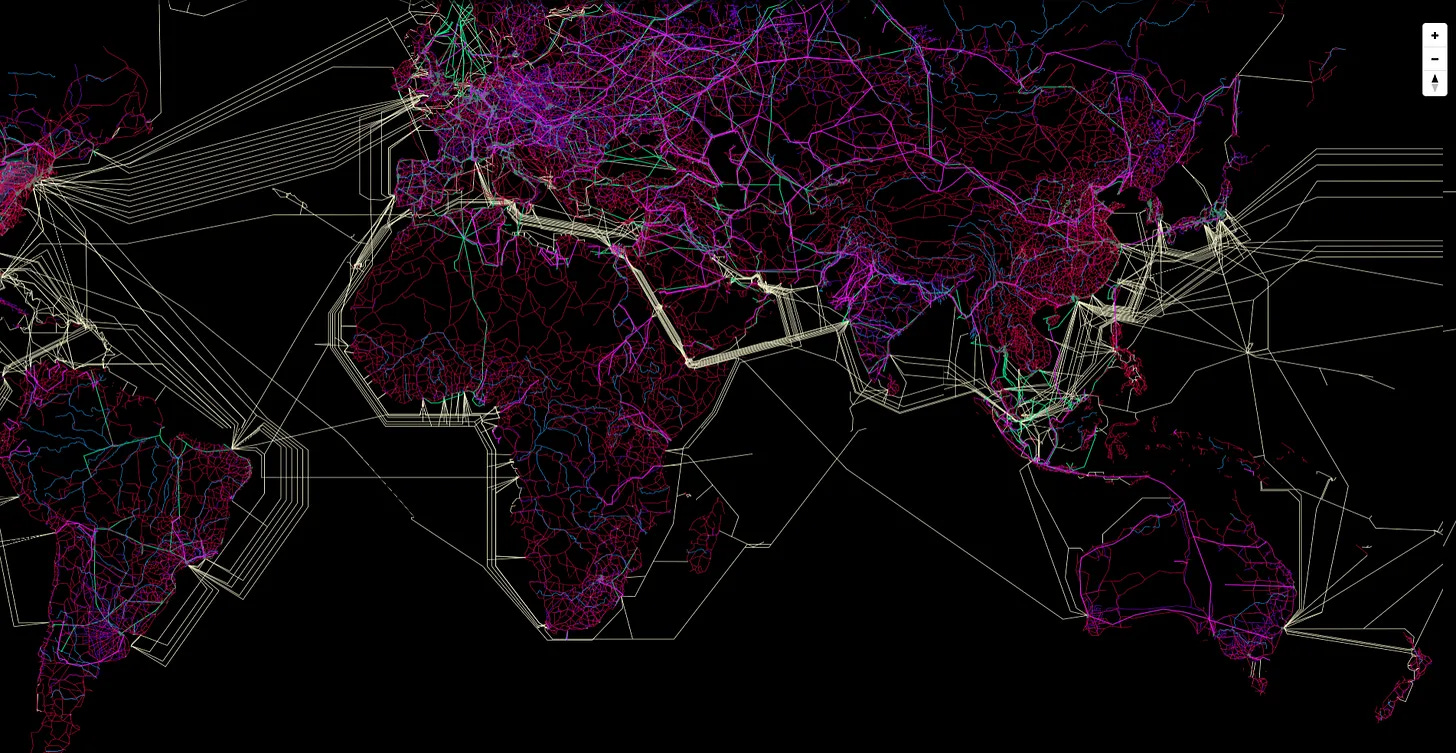Visible, Yet Unseen
Moving beyond yesterday's business metrics.
Peter Drucker said,
“Look out the window and note what’s visible but not yet seen.”
This insight is vital for business leaders today, where decisions often rely on yesterday’s metrics while tomorrow’s signals go unnoticed.
Measurement Metrics in a Complex World
Tools like the Observatory of Economic Complexity (OEC)1 and Harvard’s Economic Complexity Index (ECI)2 measure countries’ export diversity and sophistication. Nations like Japan, South Korea, and Switzerland consistently rank high, reflecting advanced economies with diversified exports and strong growth potential. By contrast, Australia’s rank of 102nd3, of 145 nations in the 2022 ECI, underscores its over-reliance on low-complexity exports like minerals and agriculture.
Forecasting Long-Term Economic Growth
The Observatory of Economic Complexity applies economic complexity principles to forecast long-term economic growth. This approach is based on the observation that national incomes tend to converge among countries with similar levels of complexity. Economic growth forecasts for 87 countries are generated using a multidimensional framework that incorporates data on a country’s export composition, patents, and research publications, offering a more detailed view of an economy’s growth potential.
However, this framework reflects an outdated perspective. By relying heavily on formal institutions to generate patents and research publications, it misses dynamic, decentralized indicators of innovation and entrepreneurial activity. Traditional measures fail to capture the ingenuity emerging from informal ecosystems, grassroots initiatives, and digital platforms - drivers increasingly shaping modern growth and commercial opportunity. In a world defined by platforms, networks, and intangible assets, this gap does not fully prepare business leaders for what’s next.
When we look more closely, we can find case studies showcasing novel and innovative solutions and business models:
Case Studies: Seeing Beyond the Visible
M-KOPA (Kenya)4: By combining mobile payment systems with solar power delivery, M-KOPA addresses energy access and financial inclusion in regions with limited traditional infrastructure. It shows how technological innovation can unlock opportunities in overlooked markets, creating scalable, impactful solutions.
SELCO (India)5: This company expanded its solar energy solutions from India to Southeast Asia, adapting to local socio-economic conditions. SELCO’s ability to scale impact by tailoring innovations to different markets illustrates how businesses can think globally while acting locally.
Sistema.bio (Mexico)6: By scaling its biodigester technology from small-scale Mexican farmers to agricultural contexts across Latin America, Africa, and Asia, Sistema.bio highlights the global relevance of solutions rooted in specific local needs. It’s a reminder that many global challenges share common threads, and solutions can travel far if adapted thoughtfully.
These organizations, and many thousands like them in low- and middle-income countries, demonstrate the value of looking beyond what’s immediately visible. They challenge assumptions about where solutions can come from and who they are for, leveraging modern tools to create outcomes that extend beyond traditional boundaries. They also highlight how large markets with growing young populations can benefit significantly by addressing socioeconomic, environmental, educational, and health challenges through digital-enabled solutions.
Advancements in Communication Infrastructure
A crucial enabler for the innovative solutions from M-KOPA, SELCO, and Sistema.bio is robust communication infrastructure. While these organizations developed unique solutions tailored to local challenges, their ability to scale and replicate success across regions depends heavily on modern connectivity. M-KOPA’s mobile payment system, for instance, relies on mobile networks and digital infrastructure to process transactions and monitor solar units remotely. Similarly, SELCO’s expansion across Southeast Asia was made possible through networks that enable knowledge sharing, remote monitoring, and coordinated operations across borders.
The increasing reach and reliability of communication networks is transforming how innovations spread and scale as well as reshaping global connectivity by decentralizing opportunities for growth and impact.
The Connectivity Atlas7, a collaboration between DevelopmentSeed, the University of Wisconsin-Madison Cartography Lab, and Dr. Parag Khanna, maps global infrastructure like roads, railways, pipelines, and internet cables. These maps highlight how networks unite us beyond traditional political borders and indicate where costs and other barriers to international business are being dismantled.
The Connectivity Atlas, highlighting communication, energy, and transportation infrastructure
Source: https://developmentseed.org/connectivity-atlas/about/
Additionally, advancements in satellite communication technologies are enhancing global connectivity. The deployment of large numbers of satellites in coordinated networks, known as proliferated satellite constellations, is becoming more common. These constellations provide resilient global network coverage by ensuring connectivity even if some satellites malfunction or are damaged.
Lockheed Martin identifies two related trends in space technology for 20258:
Advanced Communications: The evolution of satellite communication technology, including software-defined payloads, enables satellites to adapt dynamically to changing demands. This allows for efficient allocation of bandwidth, increased data transmission speeds, and improved network resilience. As a result, remote and underserved regions can access high-speed internet, unlocking opportunities for education, healthcare, and commerce.
Proliferated Satellite Constellations: These involve deploying hundreds or thousands of interconnected low-Earth orbit (LEO) satellites to create robust, global networks. Unlike traditional single-satellite systems, these constellations provide uninterrupted coverage by maintaining connectivity even when individual satellites encounter issues. Companies like SpaceX (Starlink9) and Amazon (Project Kuiper10) are deploying such constellations to deliver affordable, reliable internet to areas where terrestrial infrastructure is limited or non-existent. This decentralization of connectivity is driving the creation of innovative business models, from telemedicine platforms in remote villages to e-commerce in previously unreachable markets.
These advancements are reshaping the global communications landscape, decentralizing access to opportunity, and reducing the barriers to participating in the digital economy. Increasingly, they create a level playing field for anyone, anywhere, to start a business and solve or sell worldwide.
Rethinking Opportunity
The most successful leaders are those who constantly reassess the tools and metrics they use to evaluate opportunities. In the same way that the OEC and ECI highlight export diversification as a driver of growth, businesses must diversify their approaches to assessing risks and opportunities.
It’s not just about adding new products or services. It’s about questioning whether our systems for identifying value and threats are built for the future or stuck in the past. Leaders who only focus on what has worked before risk missing the emerging signals of change as well as emergent opportunity.
Leading with an Expanded Worldview
Key is to widen the lens. Incorporate emerging metrics like digital economy contributions, social innovation, and network effects into strategic thinking, alongside demographic shifts and advancements in digital connectivity. It pays to look beyond priority markets, industries, or regions to uncover what’s visible but not yet seen.
Those addressing financial inclusion, scaling renewable energy, or tackling social challenges will discover opportunities by questioning outdated constructs. As Drucker reminds us, what’s visible is not always what’s seen.
There is more to the world than what we see.
By updating how we see the world, we unlock its full potential.
Shifting Hubs: The Geography of Innovation
“When you change the way you see the world, you change the world you see.” - Satya Nadella, CEO of Microsoft
Global Shifts in Power: What are the New Places, New Faces?
“To hold a pen is to be at war.” - Voltaire
https://oec.world/en
https://atlas.hks.harvard.edu/
https://atlas.hks.harvard.edu/countries/36
https://www.m-kopa.com/
https://selco-india.com/
https://sistema.bio/
https://developmentseed.org/connectivity-atlas/
https://www.lockheedmartin.com/en-us/news/features/2024/space-technology-trends-2025.html
https://www.starlink.com/
https://www.aboutamazon.com/what-we-do/devices-services/project-kuiper





